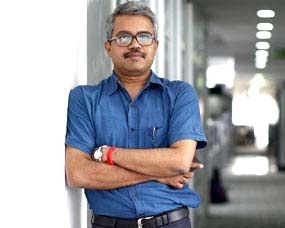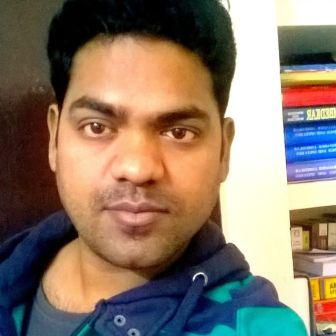Dilip Mandal
 “You never really understand a person until you consider things from his point of view. Until you climb into his skin and walk around in it.” – Barack Hussain Obama, quoting Atticus Finch, in his farewell speech on 10th January, 2017.1
“You never really understand a person until you consider things from his point of view. Until you climb into his skin and walk around in it.” – Barack Hussain Obama, quoting Atticus Finch, in his farewell speech on 10th January, 2017.1
It all started with a paper in EPW. Professor Vivek Kumar, who teaches sociology in JNU, asked some pertinent questions regarding the structure and processes of Indian sociology and posed a question – How egalitarian is Indian Sociology2? The questions he asked were related to the upper caste domination in the production of knowledge in the domain of Indian sociology. He used four different parameters and with empirical data he tried to prove his point. How successful he was in his endeavour is altogether another debate and is not within the scope of this article.
It’s not that such issues were not raised before. Standpoint theory is all about asking such questions. We have a series of scholars in the west, prominent among them Dorothy E. Smith3, doing the same. In India, Carol Upadhya asked question on the sociological practice of Ghurye and termed it as Hindu Nationalist4. It is strange that Upadhya criticising Ghurye’s sociology as “Hindu/Brahminical” is normal academic exercise for the scholars of sociology, whereas Kumar’s criticism of caste hegemony of Indian Sociology becomes deterministic, biased and prejudiced.
In his response to Kumar’s article, K L Sharma5 has questioned the motives of Kumar. Rather than providing any substantial critique to the points made by Kumar, or providing another set of empirical data, Sharma used this opportunity to point that raising the issue of diversity in academia is in itself problematic. Instead of giving counterpoints to Kumar’s argument, Sharma goes on to give credence to himself as an authority on Dalit issues by saying that “I have written on Dalits, and also compared the views of Ambedkar and Gandhi. A couple of times, I have participated in television debates on Ambedkar. I have also written on the SCs, tribal and peasant movements, and weavers. In one of my books, “Dalit” scholars have contributed articles.”
This is exactly the problem with the upper caste sociologists. Most of them can not see this as problematic.
In this regard, Sharma names some of the ‘masters’ of sociology to point out that they have done excellent work in this field.
There is no doubt about their ‘excellence’ but it seems very strange that none of these ‘masters’ of sociology have seen or described caste and caste system as a pathology or a problem. They all failed to see caste as violation of rights of the lower castes. They failed to note how caste looks like when seen from below. It’s normal for Srinivas6 and Beteille7 to stay in the houses of non scheduled caste persons, while doing their field works. There are different schools of Indian sociology but all of them have homogeneity of views while dealing with caste.
None of them has seen caste as sickness and nobody has thought that this demon has to be annihilated. On the contrary, Dr. B.R. Ambedkar had this view in his consciousness and that’s the reason his greatest work is titled Annihilation of Caste (1936). But for the masters of Indian sociology, Ambedkar was no sociologist. Though Ambedkar had presented his paper of on Castes in India8 at an Anthropology seminar way back in 1916, and had written extensively on the caste system, he failed to be in the sociology text books.
Meanwhile, EPW editor/editors decided to intervene in the debate. EPW decided to write an editorial on the Dalit issue!
In its editorial (Dec 24, 2016) EPW begins its argument with some evidences. In its introductory paragraph, the editor cites the 10th anniversary of the Khairlanji massacre, in which four persons of a Dalit family were brutally killed in a village in Maharashtra. Here EPW decides to cite the caste of the criminal as “politically-dominant, “backward caste” Kunbi–Maratha jati.” Incidentally, and it’s interesting that EPW editors don’t know this, that in Maharashtra, Kunbi are in the OBC list and Maratha are in the General category. Marathas are fighting to be in the OBC list to get the benefits of reservation. By clubbing these two categories, EPW, actually tried to create a narrative that suits the upper caste interests.
In the second paragraph, EPW cites the case of Rohith Vemula in HCU. The editorial named three perpetrators, union ministers Smriti Irani, Bandaru Dattatreya and the Vice Chancellor Appa Rao. Here EPW has cited the caste of only Bandaru Dattatreya, who belongs to a backward caste, but fails to mention the caste of Irani or Appa Rao. Here again EPW tries to create a binary between SC and OBC.
In the third paragraph, the editorial cites the case of beating of Dalits by the gaurakshaks in the Una town of Gujarat. EPW conveniently decided to camouflage the caste identity of the gaurakshaks. We don’t have answers for such selective visibility and invisibility of caste identities by EPW. The editorial goes on to mention the caste massacres of Tamil Nadu and Bihar in 1968 and late 1970s. Why late 1970s? Because that’s the only period when the private army of Kurmi landowners, massacred Dalits in Belchi. So, here again, EPW, discovered its favourite binary of SC and OBC. Why not late 1980s or late 1990s? May be during those years, the profiles of the killers are not fitting well into the narrative of EPW, as most of these killings were committed by the private armies of upper caste landlords. Most infamous of them being the Ranveer Sena, a gang of Bhumihar goons. In one of its articles in 2001, EPW had published an extensive list of such massacres9. It’s strange that EPW editors have decided to ignore such massacres only because they are not suitable to augment their argument.
Nevertheless, after making a case through selective evidences, EPW draws its conclusion:
“The dominant-caste Marathas, including the Kunbis, have come out aggressively demanding amendments to the Prevention of Atrocities Act and reservations for themselves in the context of other such dominant castes also gunning for reservations—for example, the Jats in Haryana and the Patels in Gujarat. The atrocities against Dalits must be seen in the context of such political consolidation of dominant, landowning, “backward castes” since the 1970s. Given the “graded inequality” of the hierarchically structured caste system, fragmented at every level, which also shapes access to economic and intellectual resources, the most acute contradictions are no longer between the upper castes (the foremost beneficiaries of the system) and the Dalits (the foremost victims), but between the latter and the jatis in the middle or even those more adjacent to them.”
Let’s go back to the drawing board again.
The debate was about the dominance of upper castes in the arena of social sciences, especially in the field of sociology. Here the representation of SC, ST and OBC is almost negligible on all parameters.We have empirical data, collected through RTI to prove that the upper caste domination in academia is not unique to social sciences. It is true about faculty positions in all disciplines, in all central universities and professional institutions like IITs, IIMs and AIIMSs. The National Commission for Backward Classes has to intervene in this matter10. There are similar data to prove upper caste domination in the higher judiciary, top bureaucracy, media, and the corporate sector. In all these institutions in India, where the power in democracy vests, are dominated by upper castes. In these arena, the primary contradiction is not between SCs and OBCs. Both these categories are either absent or thinly represented in these institutions.
Hence, to say that the “most acute contradiction in India are not between the upper caste and the Dalits” needs purposive sampling of very high order. This is what EPW has done in its editorial. Maybe, the editors were not aware of this flaw in their methodology. We may hope for a correction or rejoinder in this regard.
The least a sociologist can do is to accept caste as a problem or at least as an issue. Being caste blind or saying that we don’t believe in caste is insufficient. Sharma does the same while stating that he does not know the caste of the scholars. This ignorance is insufficient in terms of annihilating caste. It’s a question of praxis. But this is a valid proposition only if EPW believes in the agenda of doing away with caste and caste system.
To know whether EPW is egalitarian or not, I propose to the editors of the journal to commission a study to find out the answer to these questions:
1. Who were the editors of EPW since its inception and what caste groups they belong to.
2. What is the caste/gender/religious composition of the present editorial board of EPW.
3. During 2016-2017 how many authors of EPW were from SC, ST, OBC.
4. What is the caste/gender/religious composition of the referees, who decide what will be published in the journals.
5. How many papers, articles were published in EPW in last year that deals with the caste question. Authors of which social groups have written those articles.
~
Notes
1. https://www.nytimes.com/2017/01/10/us/politics/obama-farewell-address-speech.html?=0, Accessed on January 11, 2017
2. http://www.epw.in/journal/2016/25/perspectives/how-egalitarian-indian-sociology.html
3. Smith, D. E. (1996), Telling the Truth after Postmodernism. Symbolic Interaction, 19: 171–202.
4. Upadhya, Carol. “The Hindu Nationalist Sociology of G.S. Ghurye.” Sociological Bulletin, vol. 51, no. 1, 2002, pp. 28–57. www.jstor.org/stable/23620062.
5. http://www.epw.in/journal/2016/49/discussion/biased-and-prejudiced-view-sociologists.html
6. The Fieldworker and the Field: A Village in Karnataka,” M N Srinivas et al (ed), The Fieldworker and the Field(2006), New Delhi: Oxford University Press.
7. Beteille, Andre (1971): Caste, Class, and Power—Changing Patterns of Stratification in a Tanjore Village, Berkeley: University of California Press.
8. Dr. Babasaheb Ambedkar: Writings and Speeches, Vol. 1. Bombay: Education Department, Government of Maharashtra, 1979, pp. 3-22.
9. Sinha, Arvind, and Indu Sinha. “Ranveer Sena and ‘Massacre Widows’.” Economic and Political Weekly, vol. 36, no. 43, 2001, pp. 4095–4099. www.jstor.org/stable/4411296.
10.https://www.telegraphindia.com/1160615/jsp/nation/story_91333.jsp#.WHZ3ieuXeK0
~~~
Dilip Mandal is former Managing Editor, India Today group. He is currently doing research in JNU, on the correlation between caste and news media.










